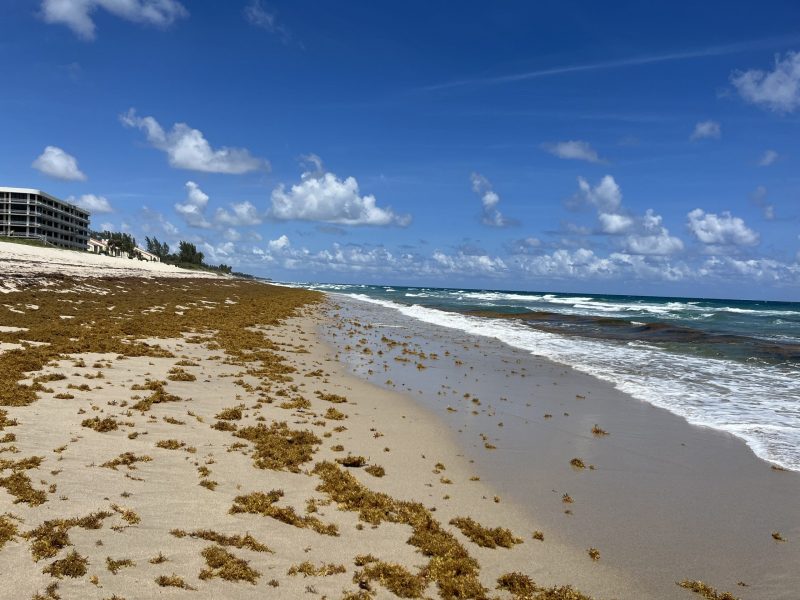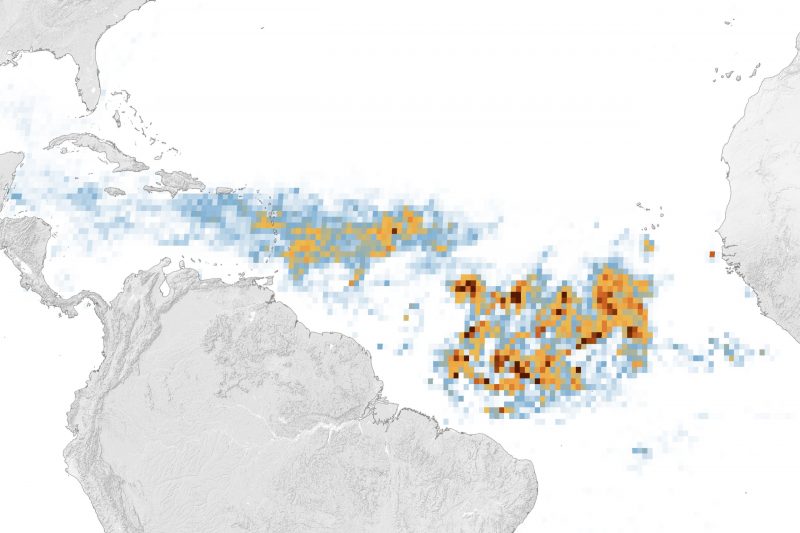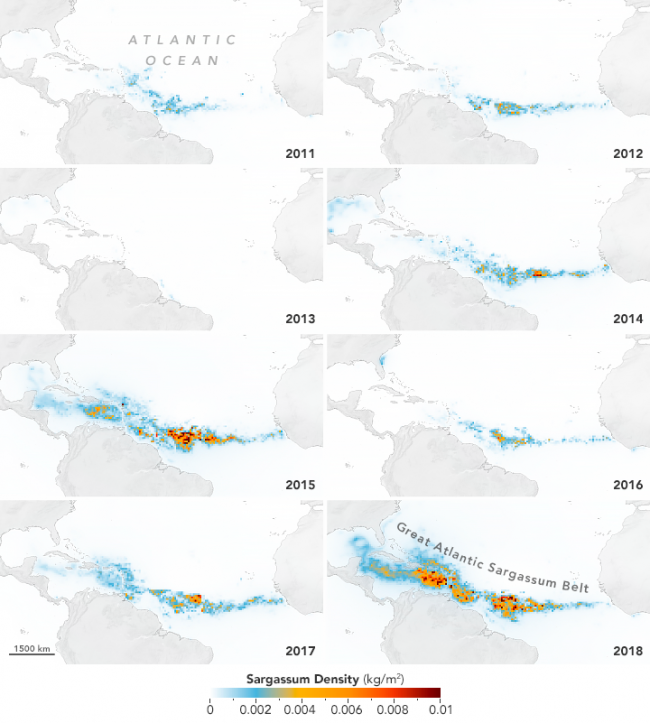
Massive seaweed bloom is largest seen
Though reportedly first seen by Christopher Columbus in the 15th century, large yearly seaweed blooms of sargassum – brown macroalgae – are a relatively new phenomenon in the Atlantic Ocean. Since 2011, a great Atlantic sargassum belt has bloomed in the Atlantic in spring and summer. And this year’s bloom is the largest on record.
As of April 2023, this year’s sargassum bloom is headed for the Caribbean and east coast of Florida. While some areas are already seeing the sargassum come ashore, the bulk of it is expected to arrive in June or July. Brian Barnes, a marine scientist at the Optical Oceanography Laboratory at the University of South Florida, said:
Major beaching events are inevitable around the Caribbean and along the east coast of Florida, as the belt continues to move westward.
Getting a view of the seaweed bloom from space
The Moderate Resolution Imaging Spectroradiometer on NASA’s Terra and Aqua satellites got a view of the sargassum from high above. The data allowed scientists at the University of South Florida (USF) to create a map of its distribution and density.
As of March 2023, the greatest concentration was in the central Atlantic Ocean. On the map below, red and orange show the greatest density. Scientists at USF said the sargassum belt last month totaled about 13 million tons.
That’s a record amount for March.

Is sargassum good or bad?
So is sargassum good or bad? As with most things in life, too much can be a bad thing. Over the open ocean, smaller amounts provide habitat for marine life such as turtles. Sargassum also produces oxygen for sea life through photosynthesis. But too much sargassum can do the opposite.
When sargassum clogs the ocean near the shore, some marine life can find it difficult to move and breathe. And when the sargassum sinks to the seafloor en masse, it smothers coral and other life.
Sargassum that has washed up onto the beach decomposes and smells like rotten eggs. And, on April 6, 2023, The Weather Channel warned Florida residents and visitors not to touch the seaweed.
Some of the organisms that live in the seaweed, such as microscopic jellyfish, larvae, and other creatures, can cause rashes.
A growing problem
Since its discovery in 2011, the great Atlantic sargassum belt has been growing larger. As you can see from the chart below, the summer of 2018 brought massive amounts of sargassum ashore. That year, in July, scientists estimated there was a peak of 20 million tons of sargassum.
So why is sargassum becoming more plentiful? NASA Earth Observatory said:
Although the cause of this growth is not immediately clear, the researchers found in past research that nutrient inputs from fertilizers and other sources are correlated with larger blooms. Changing ocean circulation patterns are also a factor because sargassum grows faster when sea surface temperatures are normal or cooler than average.

Bottom line: A massive seaweed bloom of sargassum in the Atlantic Ocean is headed toward the Caribbean and east coast of Florida. Some locals are already seeing the brown macroalgae washing ashore.











